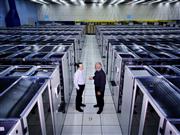Half of IT leaders are 'cost-center' CIOs, 25% are 'digital' CIOs, survey says

There's a lot of talk these days about "digital" initiatives, which tend to be treated separately from plain-old information technology work. But are the two really so different?
Yes, says CIO's Maryfran Johnson, who just presented the results of CIO magazine’s "13th annual State of the CIO" study, which reveals "stark contrasts between traditional CIOs who focus more on internal operations and digital CIOs who expand IT’s influence externally to work directly with customers and business colleagues."

In other words, "traditional" CIOs -- who worry about the uptime of the mainframe -- are different from "digital" CIOs, who are spending time on strategic business growth. (Not to be confused with the emerging title of "chief digital officer," who focuses on social initiatives, or the existing role of chief technology officer, who is concerned with selling technology solutions.
The difference between being digital and being stuck in the mud is in the way CIOs -- as well as others -- view their jobs. Nearly half of the 722 IT leaders surveyed say their departments are seen primarily as "cost centers or service providers." However, another 25% are at the cutting edge of organizational innovation, Johnson says. "They focus externally and meet with customers. They make friends in the C-suite. They keep IT credibility high across the organization."
Here is CIO's synopsis of the key differences, in terms of priorities:
Cost-center CIOs are most concerned with:
- "Improving IT operations
- Deploying new systems
- Controlling IT costs"
Digital CIOs are most concerned with:
- "Driving business innovation
- Cultivating the IT-business relationship
- Developing business strategy"
There is also a big difference in compensation as a result. While the overall average pay for all CIOs is now $219,500 a year, digital CIOs make up to $249,000, while cost-center CIOs average about $182,000.
Don't blame the CIOs themselves for being too focused on cost-center issues versus the bigger picture. The ability to elevate one's job to a more strategic level depends on the overall culture of management of the organization. Some organizations stay in business in spite of themselves, and often regard IT departments and technologies as intrusive expenses.
Or, they expect that by dropping technology on top of a dysfunctional area of the business, it will automatically clear out cobwebs and make things profitable. When this doesn't magically happen, the CIO gets blamed. Such organizations tend to treat the rest of their employees the same way -- produce or get out. Even the most enlightened IT leader walking into this kind of company is going to end up butting heads with other executives and being frustrated.
More enlightened organizations, on the other hand, recognize that long-term investments in and support of technology are key to their future. They're willing to make use of technology to innovate, and are highly tolerant of failure -- it's all part of the learning experience. They view CIOs and IT leaders as partners and valued advisers for their advance into the digital economy. This is likely the kind of environment from which digital CIOs spring.
CIO's Kim Nash provides more in-depth details to the CIO survey.